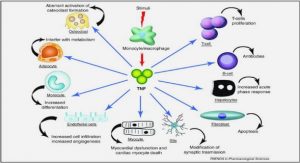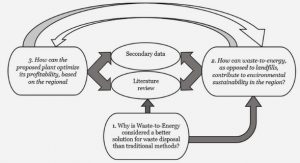Get Complete Project Material File(s) Now! »
Gender, poverty and development in Limpopo
Limpopo (Figure 1.1) is one of the nine provinces that constitute South Africa. It is the most northerly province in South Africa and shares boundaries with the Gauteng province in the south, Mozambique in the east, Botswana in the west and Zimbabwe in the north. The position of the province is of strategic importance as it acts as a gateway to Africa. The province also gains from NEPAD initiatives of integration across the province. The province comprises Mopani, Vhembe, Waterberg, Capricorn and Sekhukhune districts. Its population increased from 4.9 m in 1996 to 5.2 m in 2001, and to 5.4 m in 2011 (Statistics South Africa, 2011). Its gender breakdown profile shows a higher percentage of females (54.6%) than males in 2001, and in 2011, 53.3% were female, while males formed 46.6% of the population. The racial structure of the population is composed of Black Africans (the majority by far), Coloureds, Asians Indians and Whites, and the total population in 2011 was 53 96 408 m. The age distribution of the population resembles the broad-based pyramids of developing countries.
Gender, poverty and development in the Makhuduthamaga Local Municipality
The Makhuduthamaga Local Municipality is located in the Greater Sekhukhune District (Figure 1.1). It shares boundaries with the municipalities of Fetakgomo to the north, Greater Tubatse in the north- and south-east, Greater Groblersdal (now Eleas Motsoaledi) in the south and Greater Marble Hall now (Ephraim Mogale) in the southwest. It is about 270 km from the province of Gauteng. Jane Furse is the headquarters of the municipality and is centrally located within the Sekhukhune District. The municipality was originally inhabited by the ‘Bapedi ba Sekhukhune’, living in a typical rural setting, where livestock and crop farming were practised under unreliable summer rainfall conditions. Unfortunately, the major part of the land area is rapidly disappearing under new settlement constructions, and economic activities, which include the recent shopping complex developments. However, although farming was revered in the past, the present generation no longer value farming. The worst part is that the older people who were used to farming are disappearing from the scene due to death from diseases or old age.
Poverty reduction in Makhuduthamaga Local Municipality
In the context of a rural setting, poverty could be referring to a condition in which a person would not have food or clothes, have a substandard house that did not really offer shelter and people going to sleeping without having eaten anything. With regard to housing, it is the obligation of the municipality to supply the elderly and orphans with accommodation. In cases where poverty is extreme, the municipality assumes the provision of all basic needs, such as free electricity, water and shelter to the vulnerable and marginalised groups – particularly women. Food is supplied in the form of food parcels, but this is not enough. As a result, such groups are provided with seeds to do some farming in order to ensure food security. The municipality is also working hand-in-hand with SASSA to make sure that those who are eligible for social grants are helped immediately.
Gender equity in Makhuduthamaga Local Municipality
In the context of the South African Constitution, gender equity specifically refers to ensuring that men and women have an equal understanding of access to and control over social, political and economic resources in post-apartheid South Africa. This is one aspect which, if not attained, will allow the problem of poverty to continue. The researcher is aware that it is tough to transform people from an inequality setup, but this seems to be the only immediate tool available for poverty reduction and alleviation. In this regard, the municipality (IDP, 2009/2010:156) promised to organise efforts and resources in such a manner that they are equally available to both men and women. Such an approach would help to arouse the feeling among women and the vulnerable of belonging to the nation.
TABLE OF CONTENTS :
- Dedication
- Acknowledgements
- Declaration
- Abstract
- List of Figures
- List of Tables
- Acronyms
- CHAPTER ONE: The role of gender within the development process in the Global South with special reference to rural South Africa
- 1.1 Gender mainstreaming (GM)
- 1.2 Women empowerment
- 1.3 United Nations Millennium Goals (MDGs)
- 1.4 Gender and assets
- 1.5 The role of gender within the development process in Africa
- 1.6 Gender and development in South Africa
- 1.6.1 Gender legislation in South Africa
- 1.6.2 National Development Plan (NDP)
- 1.6.3 Women empowerment in South Africa the way forward
- 1.7 The aim of the research
- 1.8 Geographical area of the study
- 1.9 The conceptual framework of the study
- 1.10 The research design
- 1.10.1 Post-development theory
- 1.10.2 Research methodology
- 1.10.3 Data collection
- 1.11 Ethical considerations
- 1.12 Value of the study
- 1.13 Organisation of the thesis
- CHAPTER TWO: Mainstreaming gender as a way to reduce poverty and inequality with special reference to South Africa
- 2.1 Gender, poverty and development at international level
- 2.2 Gender, poverty and development in Africa
- 2.3 Gender, poverty and development in South Africa
- 2.3.1 Policy and legislative framework
- 2.3.2 National Development Plan
- 2.3.3 Gender, poverty and development in Limpopo
- 2.3.4 Gender, poverty and development in Makhuduthamaga Local Municipality
- 2.3.4.1 Poverty reduction in Makhuduthamaga Local Municipality
- 2.3.4.2 Gender equity in Makhuduthamaga Local Municipality
- 2.3.4.3 HIV/AIDS levels in Makhuduthamaga Local Municipality
- CHAPTER THREE: Women empowerment in the Makhuduthamaga Local Municipality using the asset-based approach to development
- 3.1 Post-development theory and the development of Participatory Rural Appraisal
- 3.2 Comparison of Rapid Rural Appraisal and Participatory Rural Appraisal
- 3.3 Participatory Rural Appraisal
- 3.3.1 Principles associated with Participatory Rural Appraisal (PRA)
- 3.3.2 The role of Participatory Rural Appraisal in rural development
- 3.3.3 The use of the Participatory Rural Appraisal to achieve the aims and objectives of this research
- 3.3.4 The application of Participatory Rural Appraisal in the discipline of Geography in South Africa
- 3.4 Asset-based approach to the empowerment of women in the rural areas of the Global South
- 3.4.1 An understanding of the term ‘assets’ within the asset-based approach to development
- 3.4.2 The Asset-Based Community Development (ABCD)
- 3.3.3 The Community Asset Mapping Programme (CAMP)
- 3.3.4 Applicability of the asset-based approach to this research
- 3.5 Asset-based approach within the Makhuduthamaga Local Municipality
- 3.6 Data Collection
- CHAPTER FOUR: Orientation and description of the projects in the Makhuduthamaga Local Municipality
- 4.1 Levels of poverty and inequality in Limpopo
- 4.2 The impact of high levels inequality and poverty as triggers to self-empowerment in the Makhuduthamaga Local Municipality
- 4.3 Projects created by women of the Makhuduthamaga Local Municipality to improve their quality of life
- 4.3.1 Hlabologang Bakery Co-Op
- 4.3.2 Diphagane Vegetable Gardening Co-Op
- 4.3.3 Ba Kgobokane Art and Craft Co-Op
- 4.3.4 Raemet Kreaxion Co-Op
- 4.3.5 Maano A Basadi Co-Op
- 4.4 Location of the projects relative to Jane Furse, the growth point of the Makhuduthamaga Local Municipality
- 4.5 The use and development of local assets by women to facilitate selfempowerment
- 4.6 Monitoring and evaluation of the projects
- CHAPTER FIVE: Qualitative description of the project members and self-reflection
- CHAPTER SIX: Roots-driven women empowerment in the Makhuduthamaga Local Municipality as an example for rural communities
GET THE COMPLETE PROJECT
A GEOGRAPHICAL INVESTIGATION INTO WOMEN EMPOWERMENT WITHIN THE MAKHUDUTHAMAGA LOCAL MUNICIPALITY, LIMPOPO, SOUTH AFRICA






